Persimmons are a tasty fall fruit that can add a unique flavor to many dishes. These orange-hued gems are versatile and can be used in both sweet and savory recipes. From pies and tarts to salads and sauces, persimmons offer plenty of ways to spice up your meals.
You’ll find a variety of delicious persimmon recipes to try in this article. Whether you prefer baked goods, frozen treats, or hearty salads, there’s something for everyone. Get ready to explore new ways to use this seasonal fruit and impress your family and friends with your culinary skills.
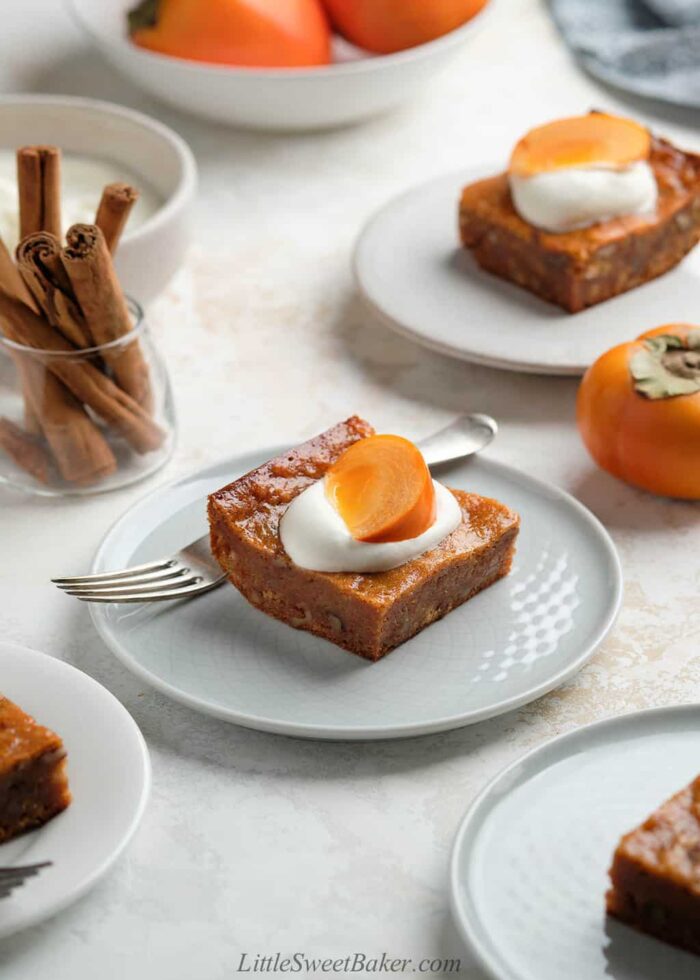
1. Persimmon Pudding
Persimmon pudding is a classic dessert that showcases the unique flavor of ripe persimmons. This traditional American treat has roots in the Midwest and is often enjoyed during the fall and winter months.
To make persimmon pudding, you’ll need persimmon pulp, eggs, sugar, flour, and spices. Mix these ingredients together and bake until set. The result is a moist, cake-like dessert with a texture similar to pumpkin pie filling.
You can serve persimmon pudding warm or cold. It pairs well with a dollop of whipped cream or a splash of milk. This dessert is sure to impress even those who claim not to like persimmons.
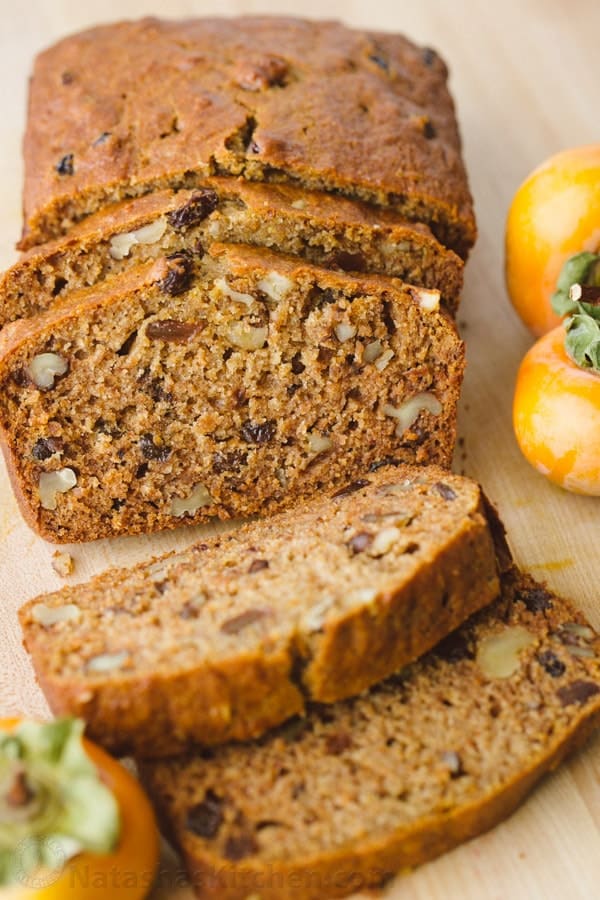
2. Persimmon Bread
Persimmon bread is a tasty way to use ripe persimmons. You can make this moist, spiced quick bread in about 15 minutes using just one bowl.
The recipe typically includes cinnamon, nutmeg, and cloves for warm flavor. Walnuts and raisins add texture and sweetness.
You can enjoy persimmon bread for breakfast, as a snack, or even dessert. It pairs well with coffee, tea, or hot cocoa.
This bread freezes well, so you can make extra loaves to save for later. It also makes a nice homemade gift during persimmon season.
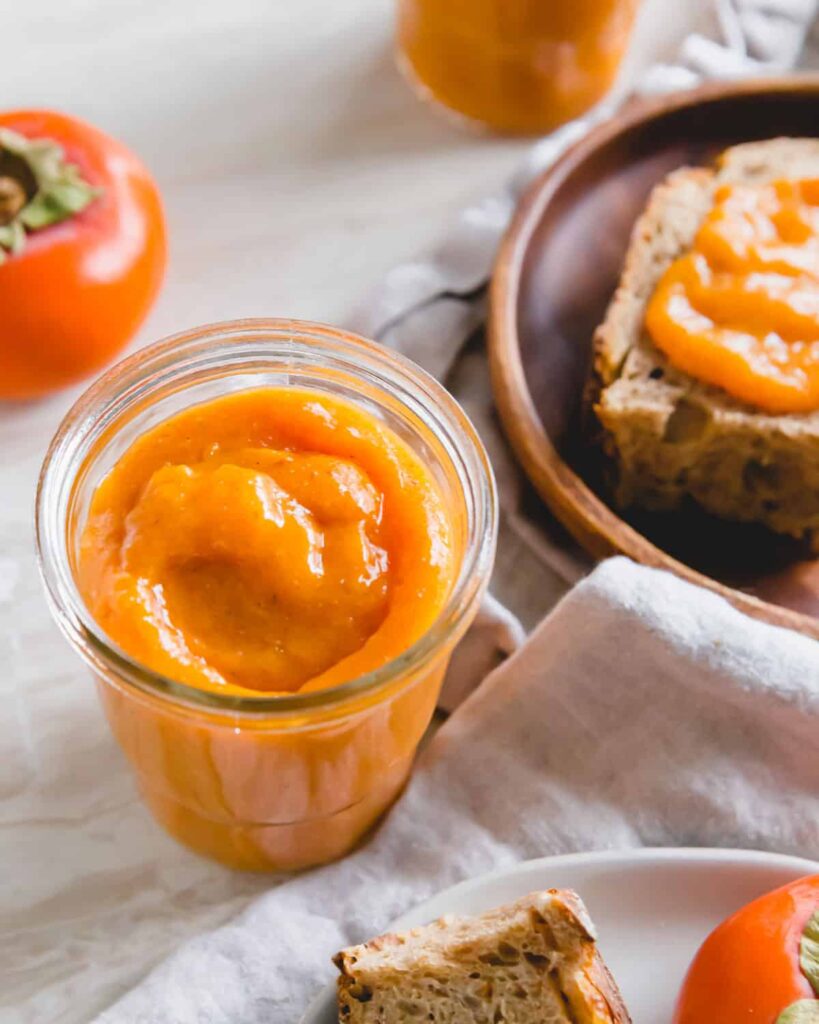
3. Persimmon Jam
Persimmon jam is a tasty way to enjoy this sweet fruit year-round. To make it, you’ll need ripe persimmons, sugar, and lemon juice.
Start by peeling and chopping the persimmons. Put them in a large pot with sugar and lemon juice. Cook the mixture over medium heat, stirring often.
As the jam cooks, it will thicken. Test it by putting a small amount on a cold plate. If it gels, it’s ready. Pour the hot jam into clean jars.
You can store your persimmon jam in the fridge for a few weeks. For longer storage, process the jars in a water bath canner. This delicious spread is great on toast or mixed into yogurt.
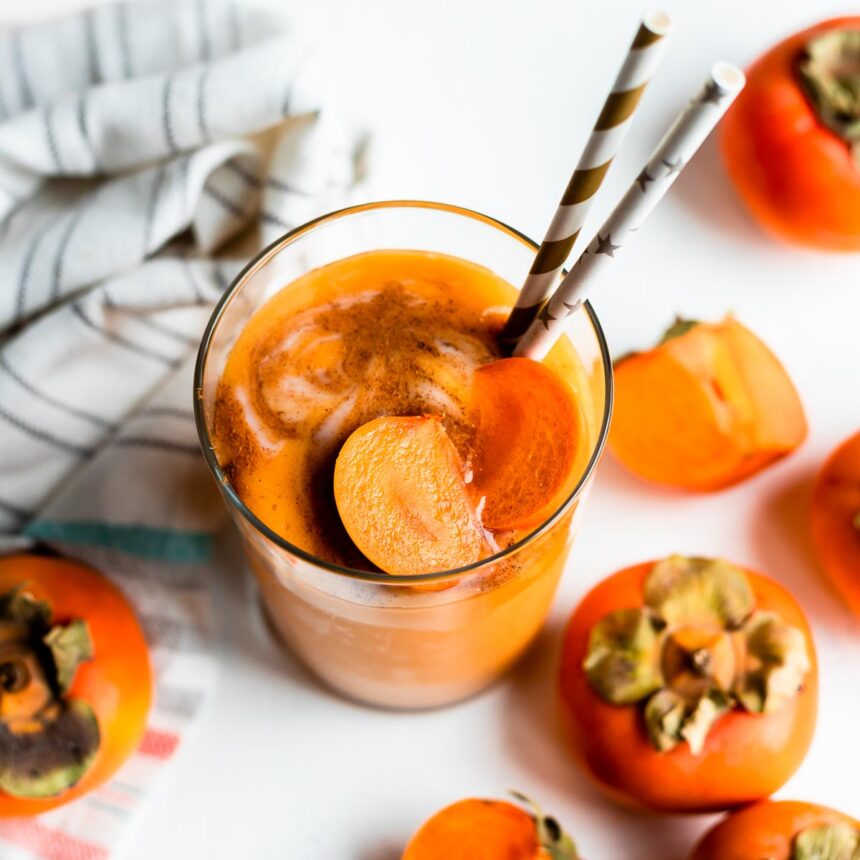
4. Persimmon Smoothie
Persimmon smoothies are a tasty way to enjoy this fall fruit. To make one, you’ll need ripe persimmons, a banana, and your milk of choice.
Start by washing and removing the stems from the persimmons. Cut them into pieces and add them to your blender.
Toss in a frozen banana for extra creaminess. Pour in some almond milk or regular milk. You can also add yogurt for protein.
Blend everything until smooth. For extra flavor, try adding cinnamon, vanilla, or a touch of honey.
Pour your smoothie into a glass and enjoy! It’s a quick and nutritious snack or breakfast option.
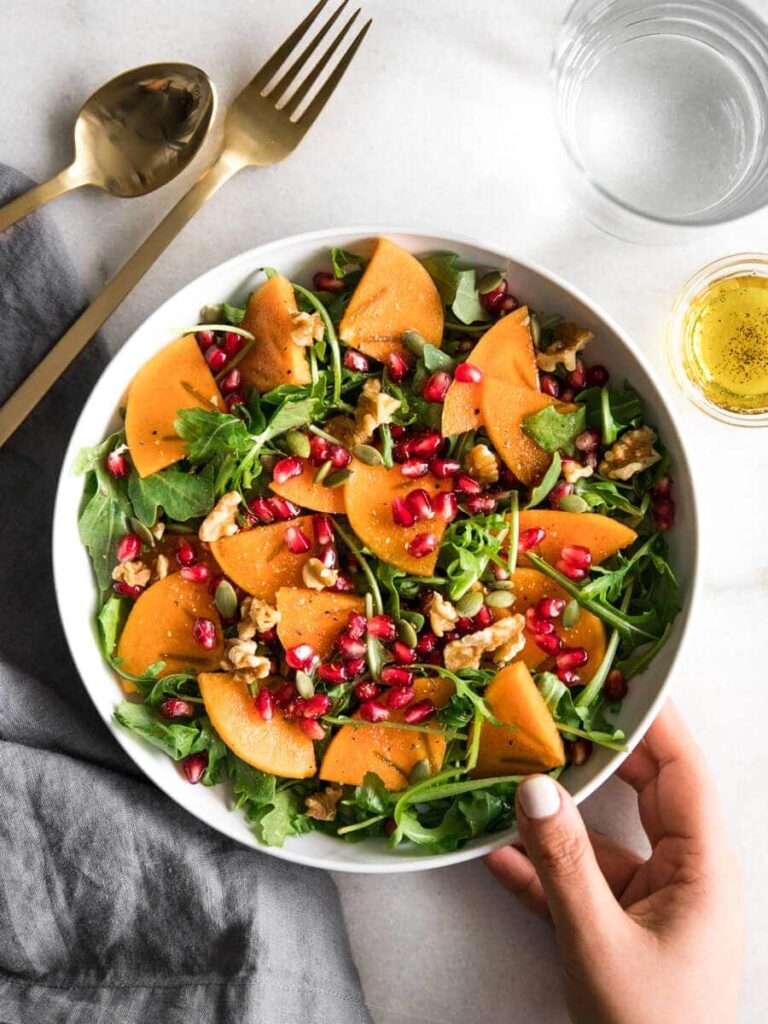
5. Persimmon Salad with Arugula
Persimmon and arugula salad offers a delightful mix of sweet and peppery flavors. This simple dish combines ripe persimmons with crisp arugula leaves for a refreshing taste.
To make this salad, slice fresh persimmons and toss them with arugula in a large bowl. Add some creamy avocado chunks for extra richness.
Sprinkle crumbled feta cheese and chopped pistachios on top for a salty crunch. Dress the salad with a light lemon vinaigrette to bring all the flavors together.
This colorful salad takes only about 10 minutes to prepare. It makes a great side dish for any meal or as part of a holiday spread.
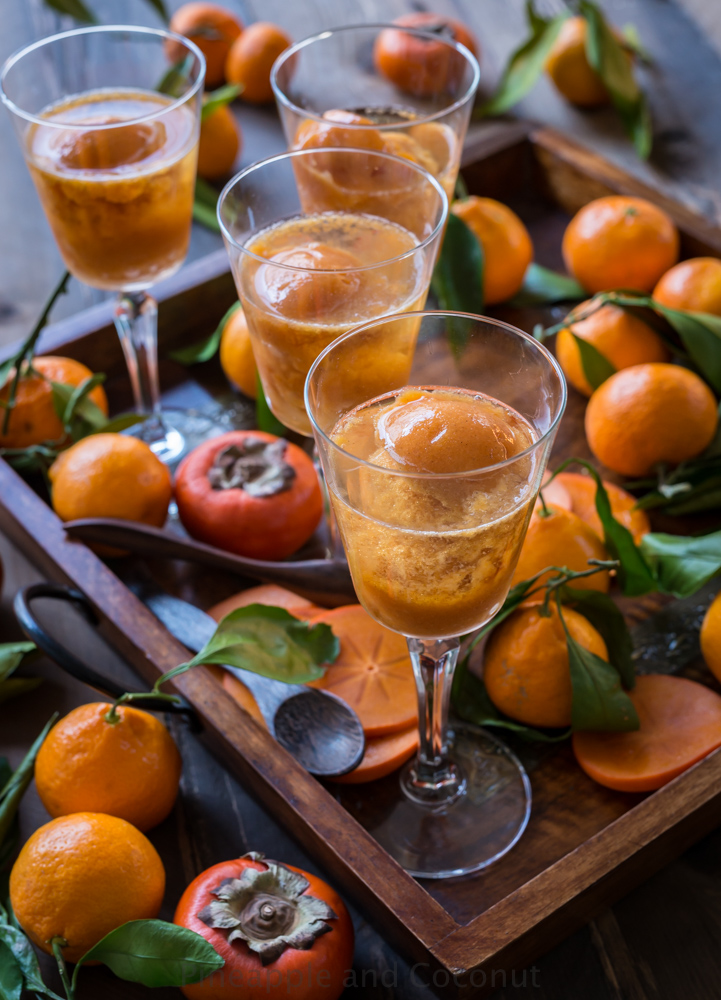
6. Persimmon Sorbet
Persimmon sorbet is a refreshing frozen treat that captures the fruit’s sweet, honey-like flavor. To make it, you’ll need ripe persimmons, sugar, and a few other simple ingredients.
Start by blending peeled and seeded persimmons with sugar until smooth. Strain the mixture to remove any fibers. Add a splash of lemon juice and a pinch of salt to enhance the flavor.
Pour the mixture into an ice cream maker and churn according to the manufacturer’s instructions. If you don’t have an ice cream maker, you can freeze the mixture in a shallow dish, stirring every 30 minutes until it reaches the desired consistency.
Serve your homemade persimmon sorbet as a light dessert or palate cleanser. It’s a great way to enjoy persimmons when they’re in season.
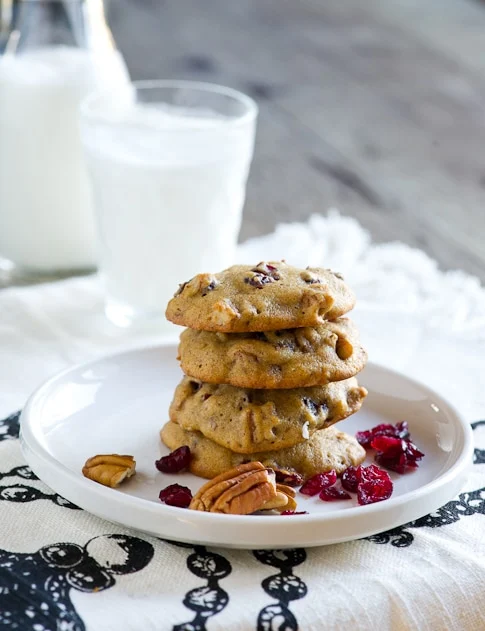
7. Persimmon Cookies
Persimmon cookies are a tasty fall treat that combines the unique flavor of ripe persimmons with warm spices. To make these cookies, you’ll need persimmon pulp, which you can easily prepare by scooping out the flesh of soft Hachiya persimmons.
Mix the pulp with butter, sugar, eggs, and flour to create a soft dough. Add cinnamon, nutmeg, and cloves for a cozy autumn flavor. You can also toss in chopped walnuts and raisins for extra texture and taste.
Drop spoonfuls of dough onto a baking sheet and bake until the cookies are golden brown. The result is a batch of moist, chewy cookies that capture the essence of the season.
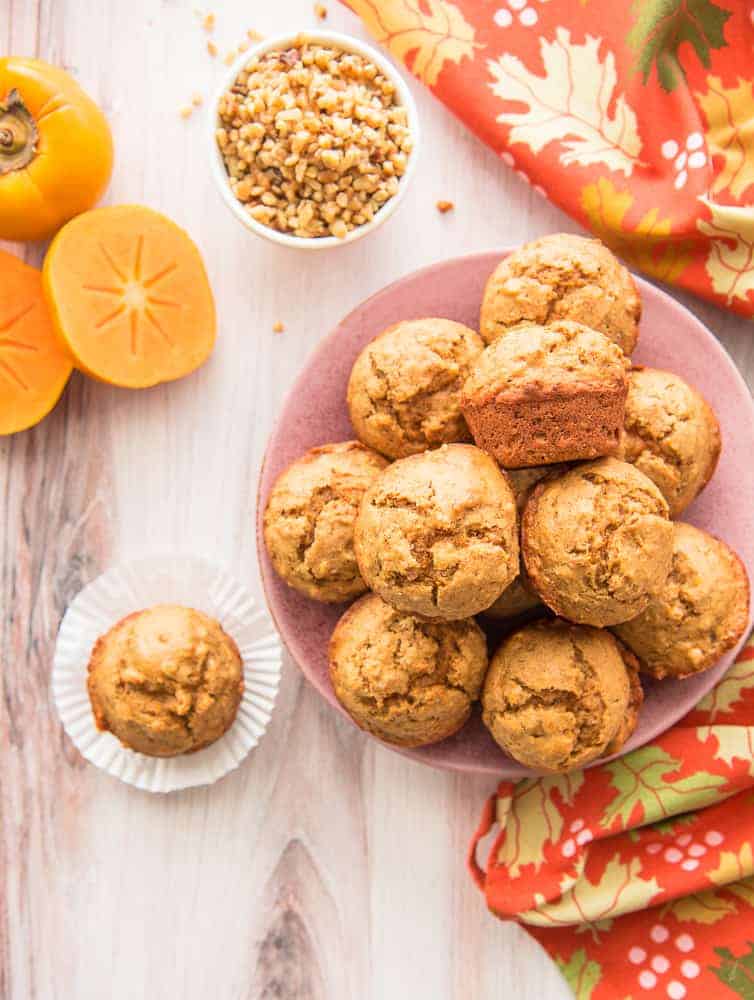
8. Persimmon Muffins
Persimmon muffins are a tasty way to use this sweet autumn fruit. You can make them easily at home with a few simple ingredients.
To start, preheat your oven to 350°F (175°C). Mix persimmon pulp with eggs, oil, and milk in a bowl. In another bowl, combine flour, sugar, nuts, and spices.
Stir the wet and dry ingredients together until just combined. Don’t overmix or your muffins may turn out tough. Spoon the batter into a greased muffin tin, filling each cup about 3/4 full.
Bake for about 15 minutes until golden brown. A toothpick inserted into the center should come out clean. Let the muffins cool before enjoying your sweet, spiced treat.

9. Persimmon Ice Cream
Persimmon ice cream offers a unique twist on a classic dessert. You can make this treat at home with just a few ingredients.
Start by pureeing ripe persimmons. Mix the puree with cream, sugar, and spices like cinnamon or cardamom. The spices complement the fruit’s natural sweetness.
Pour the mixture into an ice cream maker and churn according to the manufacturer’s instructions. For a quick version, blend frozen persimmon chunks with cream and sweetener.
This ice cream has a smooth texture and distinctive honey-like flavor. Serve it as a refreshing end to a meal or as a cool snack on a warm day.
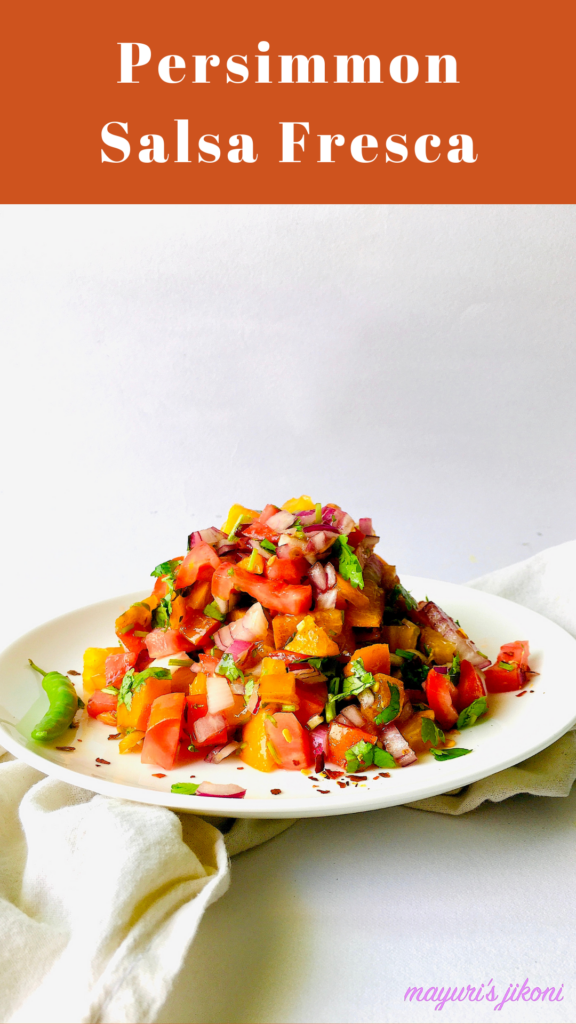
10. Persimmon Salsa
Persimmon salsa is a tasty twist on traditional salsa recipes. You can make it with diced Fuyu persimmons, red onion, and jalapeño or serrano peppers.
Add lime juice and salt to bring out the flavors. Cilantro and mint offer fresh herbal notes. For extra crunch and color, try adding pomegranate seeds.
This versatile salsa pairs well with chips, grilled meats, or fish. It’s quick to prepare and requires no cooking. Simply chop the ingredients and mix them together in a bowl.
Adjust the seasoning to your taste. You can make it spicier or milder by changing the amount of peppers used.
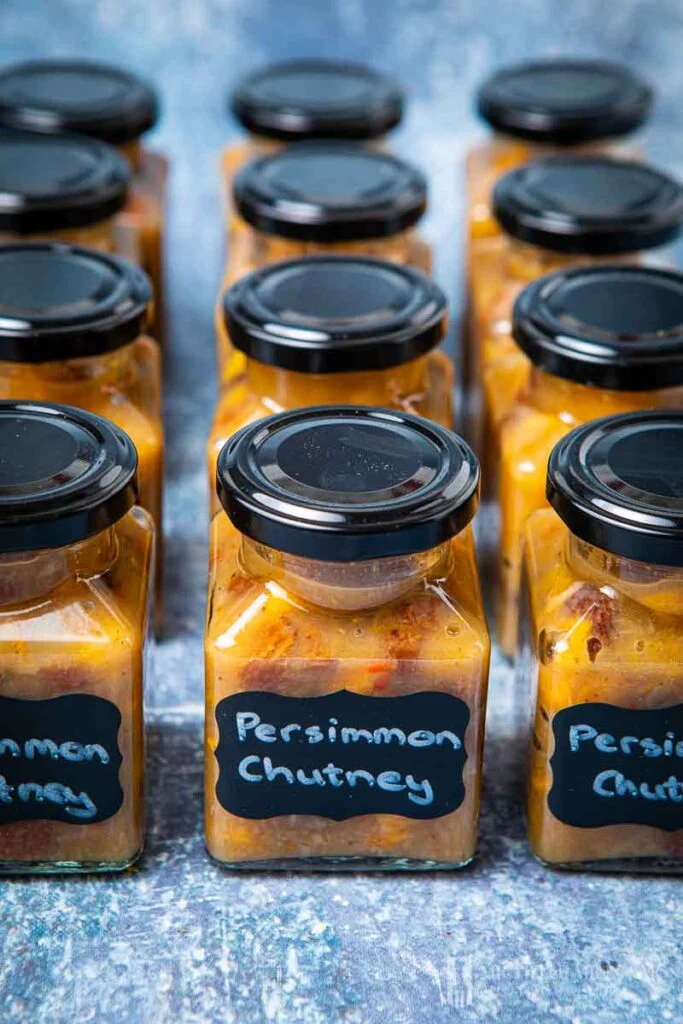
11. Persimmon Chutney
Persimmon chutney is a tasty way to use this fall fruit. You can make it easily at home with a few ingredients.
Combine vinegar, onion, apple, raisins, sugar, lemon juice, chili, ginger, and spices in a pan. Cook the mixture until it thickens.
Add chopped persimmons and simmer until tender. The chutney will have a sweet and spicy flavor.
Store your homemade persimmon chutney in sterilized jars. It makes a great gift for the holidays or a delicious condiment for your meals.
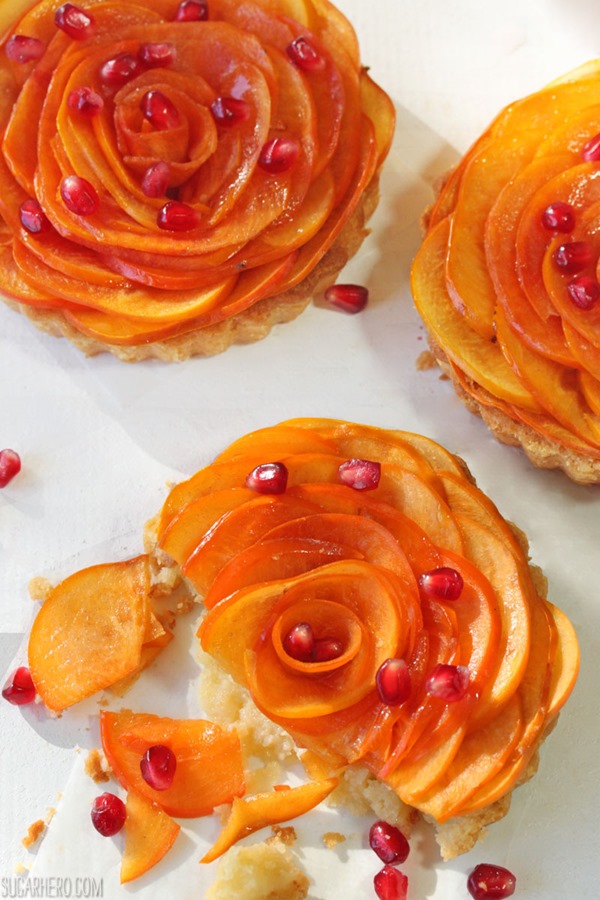
12. Persimmon Tart
Persimmon tart is a delicious fall dessert that showcases the unique flavor of this fruit. You’ll start by making a buttery crust and blind baking it until golden.
Next, prepare a filling with ripe Fuyu persimmons, heavy cream, eggs, sugar, and butter. Add warm spices like cinnamon, clove, and star anise for extra depth.
Pour the filling into the crust and bake until set. The result is a creamy, almost fudge-like texture that perfectly complements the crisp pastry shell.
For a finishing touch, you can broil the tart briefly to brown the edges of the fruit. Serve slices at room temperature for the best flavor and texture.

13. Persimmon Pancakes
Persimmon pancakes offer a tasty way to use ripe persimmons from your backyard tree. These fluffy pancakes have a unique, sweet flavor from the persimmon pulp mixed into the batter.
You can make them in just 20 minutes for a quick and cozy breakfast. The spicy, warm taste of persimmons works well in pancakes, especially during fall and winter months.
Try adding almond flour or sliced almonds to your persimmon pancakes for extra texture and nuttiness. You can also experiment with low-carb versions using almond and coconut flour instead of wheat flour.
Serve your persimmon pancakes warm with butter and maple syrup for a delicious seasonal breakfast treat.
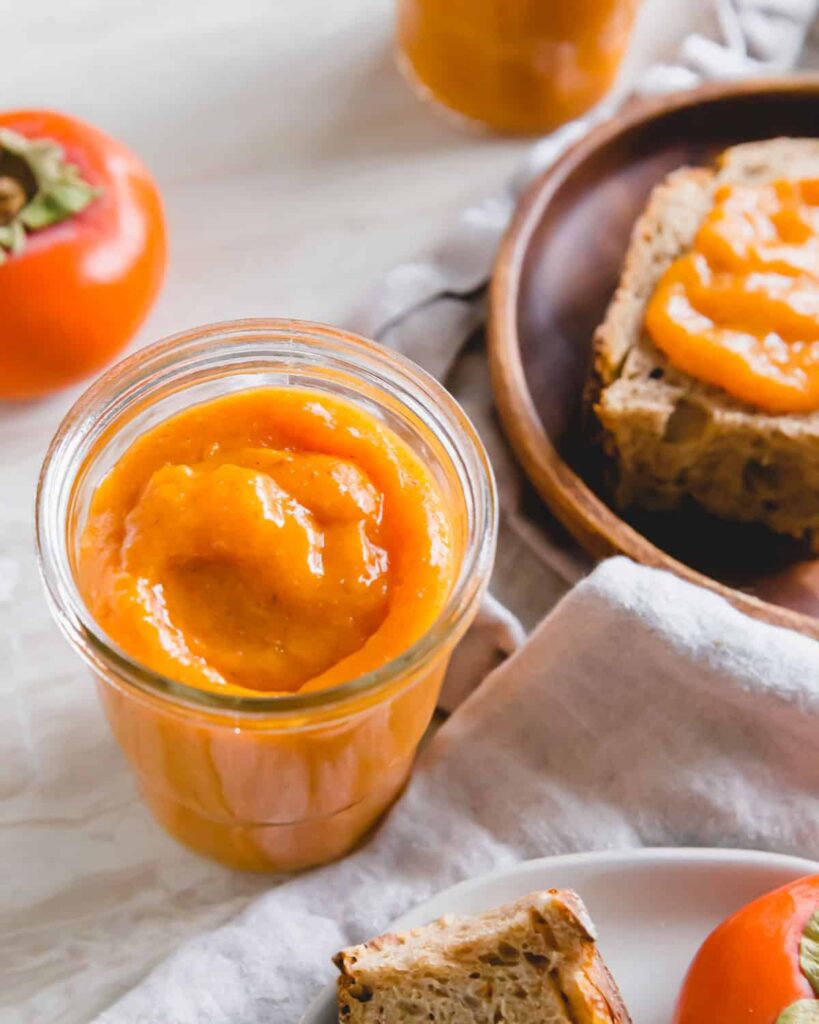
14. Persimmon Compote
Persimmon compote is a sweet and versatile treat you can make at home. To prepare it, simmer sliced persimmons in a mixture of wine, sugar, and spices like cinnamon and star anise.
Cook the fruit until it’s tender, about 20 minutes. Then remove the persimmons and reduce the syrup until it thickens. Pour the syrup over the fruit and chill before serving.
You can enjoy this compote on its own or use it to top ice cream, yogurt, or oatmeal. It’s a great way to savor the unique flavor of persimmons long after the season ends.
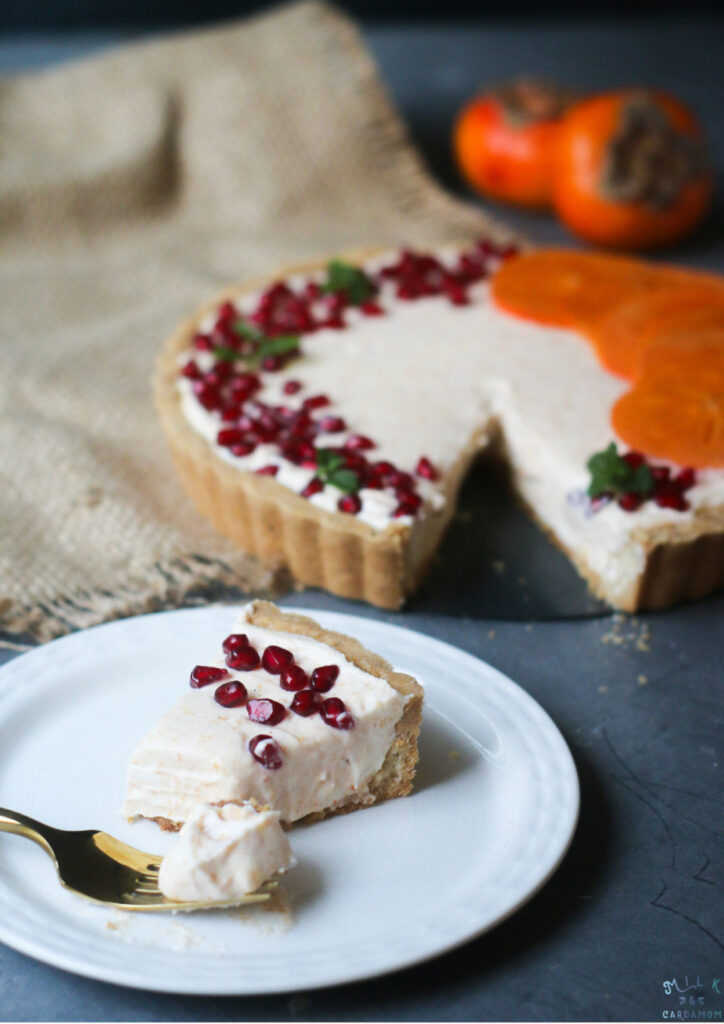
15. Persimmon Cheesecake
Persimmon cheesecake is a tasty twist on a classic dessert. You can make it with a graham cracker crust or try a spicy gingersnap base for extra flavor.
The filling blends cream cheese with pureed persimmons and warm spices like cinnamon and ginger. This creates a smooth, creamy texture with a hint of autumn flavors.
For a lighter version, you can make a no-bake cheesecake in individual glasses. Use dates and coconut sugar to sweeten it naturally. Top your cheesecake with a persimmon glaze or fresh persimmon slices for a pretty finish.
Nutritional Benefits
Persimmons pack a powerful nutritional punch. They offer many vitamins, minerals, and antioxidants that can boost your health in several ways.
Vitamins and Minerals
Persimmons are rich in vitamin A, which is key for eye health. One persimmon gives you 15% of your daily vitamin A needs.
These fruits also provide vitamin C, an immune system booster. You’ll get about 20% of your daily vitamin C from a single persimmon.
Persimmons contain manganese, a mineral that helps your body make energy and protect your cells. You’ll find small amounts of other minerals like potassium and copper in persimmons too.
Antioxidant Properties
Persimmons are loaded with antioxidants. These compounds fight harmful free radicals in your body.
The main antioxidants in persimmons are:
- Carotenoids (like beta-carotene)
- Flavonoids
- Tannins
These antioxidants may help lower inflammation in your body. Some studies suggest they could even play a role in fighting certain diseases.
Persimmons also have fiber, which aids digestion and helps you feel full. The fiber in persimmons might help lower cholesterol levels too.
Culinary Uses
Persimmons are versatile fruits that shine in both sweet and savory dishes. Their unique flavor and texture make them a great addition to many recipes.
Desserts and Sweets
Persimmons make excellent desserts due to their natural sweetness. You can use them in cakes, cookies, and puddings for a rich, autumnal flavor. Try baking a persimmon bread or muffins for a tasty breakfast treat.
For a quick dessert, blend ripe persimmons into a smooth pudding. Top it with whipped cream and a sprinkle of cinnamon for extra flair.
Persimmon jam is another delicious option. Spread it on toast or use it as a filling for pastries. You can also add persimmons to pies or tarts for a unique twist on classic desserts.
Salads and Sides
Persimmons add a sweet touch to savory dishes too. Slice them into salads for a burst of color and flavor. They pair well with nuts, cheese, and bitter greens like arugula.
You can also use persimmons in savory sides. Try roasting them with root vegetables for a colorful autumn dish. Or add diced persimmons to your stuffing recipe for a hint of sweetness.
For a simple appetizer, wrap persimmon slices in prosciutto. This combo of sweet and salty flavors is sure to impress your guests.
Storing and Selecting Persimmons
Picking the right persimmons and storing them properly helps you enjoy their sweet flavor. These tips will help you choose and keep your persimmons fresh.
Ripe vs Unripe
Ripe persimmons are soft and have deep orange or red skin. They feel heavy for their size. Unripe ones are firm and light orange.
For Hachiya persimmons, wait until they’re very soft before eating. They taste bitter if eaten too early. Fuyu persimmons can be eaten when firm or soft.
Look for persimmons with smooth, glossy skin. Avoid those with blemishes, bruises, or cracks.
Proper Storage Techniques
Store unripe persimmons at room temperature to ripen. Put them in a paper bag with an apple or banana to speed up ripening.
Once ripe, keep persimmons in the fridge. They’ll stay fresh for 2-3 weeks. Place them in the crisper drawer in a single layer.
You can freeze ripe persimmons too. Remove the leaves, peel and slice the fruit. Freeze the slices on a baking sheet, then transfer to a freezer bag.
For longer storage, dry persimmons. Remove the leaves and hang whole fruits to air dry for several weeks.